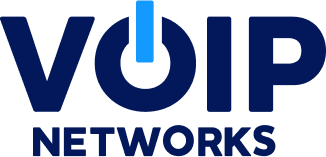Multi-instance vs. multi-tenant may sound like an obscure debate telecom engineers might have at happy hour. But if you want a system with maximum performance, reliability, and security, it’s an important question to ask.
Chances are, your UCaaS partner set up your system on multi-tenant architecture because it’s cheaper and easier for them. If you solicited multiple bids for a cloud-based telecommunications solution, it’s almost certain that the low bidder recommended a multi-tenant system.
But that isn’t the best solution for many organizations for several reasons, including control, reliability, and security. Before choosing a vendor and a system, make sure you know the difference.
Multi-Instance vs. Multi-Tenant
Imagine living in an apartment building compared to living in a single-family home.
In the apartment building, every tenant is served by the electrical line that comes into the building. If the electricity goes out, it goes out for everyone. Every tenant is bound by the same landlord’s rules, procedures, and maintenance (or lack of it). If a tenant inadvertently lets a burglar or other criminal in the main door, many residents could be affected. That’s a multi-tenant system.
In a single-family home, the homeowner makes all the decisions based on their needs. The actions of people in other homes don’t generally affect them. They can make their home as secure as they want. They can install a back-up generator in the event of a power loss. That’s multi-instance architecture.
Differing Technology
In multi-instance architecture, your organization has its own applications and operating system running on its own virtual machine. Everything can be tailored to your specific needs without affecting any other users. The opposite is also true: what other users/organizations do has no impact on your telecommunications or operations.
Multi-tenant architecture, on the other hand, shares applications and operating systems among multiple clients/users. In a multi-tenant cloud application, essentially all of the customers share the same copy of the application code. They also have their data stored in a single, shared (and often encrypted) database. When the vendor makes a new release available, there’s only one copy of the code to update, and all customers get migrated to the new release simultaneously.
Furthermore, in a multi-tenant environment, the provider typically determines the maintenance window for software upgrades, often with little notice to users. These last-minute notifications can create serious issues for users with critical systems that need to operate 24/7. A multi-instance deployment allows users to choose their maintenance window.
Drawbacks of Multi-Tenant
A multi-tenant system is cheaper. But it has some significant drawbacks.
- Limited customization. Applications and other software that affect every user often can’t be modified to suit one user’s needs.
- Forced changes. Conversely, when software is changed, it affects all users. Clients can’t opt out. Other applications that connect to the system may be affected as well. When the vendor changes the operating system, individual custom applications may need to be modified to continue working.
- Less security. Other clients won’t see your data. But with multiple users—many not part of your organization—having access to the same database, tenants have less control over security.
Which Architecture Should You Choose?
For most mid-level and enterprise clients, a multi-instance system provides many benefits, including security, reliability, flexibility, and scalability. Systems can be custom-tailored to the specific needs of the organization.
VOIP Networks specializes in building systems that are highly flexible. We develop custom solutions designed to meet any need of your organization based on your enterprise’s strategy and schedule.






